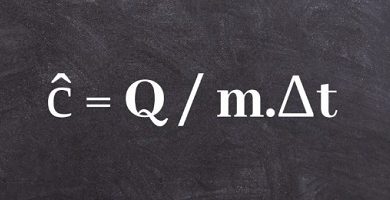What are the primary and secondary pollutants?
We explain what contaminants are, and what are the primary and secondary. In addition, examples of both types of contaminants.
-
What are the primary and secondary pollutants?
It is called pollutants to pure substances or compound whose presence in the environment ( water , air , soil, etc.) deteriorates the quality of the same, constituting a danger to life as we know it.
Normally, a distinction is made between primary and secondary pollutants to differentiate harmful substances for the ecosystem that produce damage directly (primary) by being present in the environment, from those that are formed indirectly by unforeseen chemical reactions in the environment, the result of the presence of other substances
In other words, a primary pollutant is emitted directly into the environment, while a secondary pollutant is generated in it , as a consequence of chemical reactions present. Often they can go together, the primary and secondary, since the chemical reactions that the first produce usually have the secondary as a consequence, thus generating more damage even or for a longer period of time .
Both primary and secondary pollution is one of the environmental challenges of the modern world, since its presence and its effects have increased since the emergence of human industrial society , whose uncontrolled growth and energy needs, raw material and complex chemicals leaves an important toxic footprint in the world.
-
Examples of primary pollutants

Some examples of primary pollutants are:
- Carbon monoxide (CO) . Produced by the combustion of fossil hydrocarbons, this highly toxic gas is released directly into the atmosphere by the escapes of motor vehicles.
- Radioactive wastes . Atomically unstable chemicals, such as plutonium resulting from fission of uranium in nuclear power plants , have a long half-life during which they emit energy discharges capable of altering the DNA of living things and causing disease.
- Sulfur oxides (SO x ) . As a result of the chemical industry, these sulfated compounds are often discarded in the waters of lakes and seas, where they modify the pH of the liquid and unbalance the nutrient count of certain aquatic microorganisms, which when supercharged proliferate too much and break the balance of the food chain.
- Lead (Pb) . The lead is one of the main primary pollutants of water and air. This element is produced in the combustion of hydrocarbons and thrown into the air in the form of an aerosol (suspended solid particles), and thus pollutes the air and water, as it is carried away by rain.
- Chlorofluorocarbonates (CFC) . These gaseous compounds were frequent in aerosols and refrigeration systems, until the impact they had on the ozone layer was discovered . When released, these mixtures of carbon, chlorine and fluorine whose half-life ranges between 50 and 100 years, react with oxygen in the atmosphere destroying the unstable molecule of ozone (O 3 ) and leaving us exposed to direct solar radiation.
-
Examples of secondary contaminants
Some examples of secondary contaminants are:
- Sulfuric acid (H 2 SO 4 ) . As a result of the reaction in the atmosphere of water vapor (H 2 O) and sulfur-rich gases discharged as an industrial by-product, this acid rushes to the ground along with the rain, forming what is called an “acid rain” and causing damage to all the organic matter that is exposed to it.
- Ozone (O 3 ) . Although in certain regions of the atmosphere ozone exists naturally and harmlessly, in other regions of the atmosphere it can become an extremely toxic and harmful element, which arises by photolysis of nitrogen oxides discharged into the atmosphere by heating and other systems. urban. The result, when these oxides come into contact with ultraviolet radiation, is the separation of their elements and the interruption of their degradation cycle, becoming ozone and free radicals, which form the “photochemical smog”.
- Methane (CH 4 ) . In many cases, methane counts as a secondary pollutant, since it originates from the decomposition of organic matter, which is very abundant in garbage dumps or in rural livestock farming areas (due to the herds of the herd). This disgusting and highly flammable odor gas then rises to the atmosphere, where it accumulates causing the greenhouse effect .
- Peroxyacetylnitrate (PAN) . This highly stinging compound for the eyes and lungs, and capable of damaging plants by prolonged exposure, is one of the main components of urban smog. It is produced from the decomposition in the air of volatile organic compounds, such as those used in paints and liquid petroleum derivatives .
- Biological contamination . The excessive presence of nitrates and other fertilizers used in the agricultural industry in wastewater that eventually goes to the sea, introduces to the marine ecosystem an excess of nutrients that causes certain species of aquatic algae to proliferate. Surpassing their natural predators in population , these algae proliferate disorderly and end up competing with each other and dying for tons, going to rot on the beaches.





